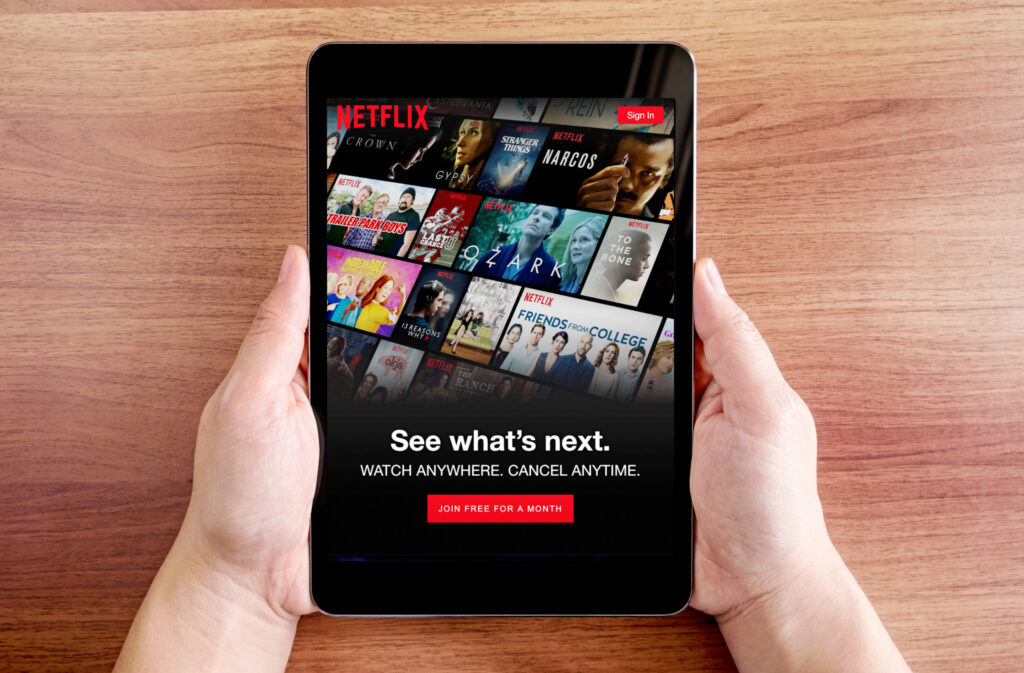An August report from marketing-research firm Nielsen confirms what has long been becoming apparent: Streaming television content is now the norm in the United States. More than half of American adults — 56 percent — now watch web-based TV content, the report says. The percentage is up from 48 percent in 2018 and 40 percent in 2017, exhibiting steady growth in the number of people classified as streamers.
The attraction to streaming content is clear. With around 85 percent of U.S. adults owning a smartphone as of 2018 and with more media services and networks making their content available via the web — all while new technology allows televisions to access the internet, too — users can catch their favorite programs pretty much anywhere they have an internet connection. And with cloud-recording capabilities, they can do so pretty much anytime they choose.
Consider these additional streaming-related statistics:
- Industry analysts predict the value of the global video-streaming market will hit nearly $125 billion by 2025. That would represent a compound annual growth rate of nearly 20 percent.
- The average U.S. consumer now spends 38 hours per week watching video content, 39 percent (or 15 hours) of which is streamed.
- Among Millennials and Generation Z consumers, more than 60 percent consume streaming television at least once a week compared with less than 30 percent of Baby Boomers.
- Between 2016 and 2018, the amount of time that consumers spent on the top five video-streaming apps increased by roughly 140 percent.
- When ranked based on consumer hours spent using them, the top five video streaming apps in the United States are: YouTube, Netflix, Hulu, Amazon Prime Video and Twitch.
- In a forecast for 2019 global media consumption, App Annie predicts that streaming video will account for 10 minutes of every hour spent consuming media during the year.
- S. consumers now have 200-plus subscription video on demand services to choose from,and the typical American household subscribes to an average of three on-demand streaming services. Nationally, this leads to an average of more than $2 billion spent on these services each month.
- Younger generations are most likely to subscribe to a video-streaming service, with nearly 70 percent of Gen Z consumers saying their household does so, compared to about 60 percent of Millennials and Gen X consumers, around 30 percent of Baby Boomers, and around 25 percent of Matures (those born before 1945).
- The binge-watching phenomenon is strong among Generation X (80 percent), Millennials (86 percent) and Generation Z (91 percent) consumers, as all of the groups feature a large majority reporting that they watch multiple episodes of streaming TV shows at once. Duration-wise, Millennials and Generation X streamers say they watch an average of seven TV episodes in a single sitting, while Generation Z streamers report watching an average of six.
- With more than a billion users, YouTube is the world’s top video-streaming site.
- Video-streaming service Netflix now has more than 150 million users globally and it experienced a year-over-year revenue increase of 35 percent in 2018 to hit nearly $16 billion — its best year yet.
- Boasting more than 18,000 available titles, Amazon Prime Video offers the largest library in the video-streaming business in the United States. Amazon Prime, which offers expedited shipping to its online shoppers in addition to its video service and other perks, now has more than 100 million worldwide subscribers.
Ready to get in on the streaming act? You’ll want to have a fast internet connection to get started — and FTC’s got you covered. Check out our high-speed internet plans and pricing at ftc.net. And thanks to watchTVeverywhere, streaming couldn’t be easier for subscribers of FTC Digital TV.Call 888-218-5050 to get your streaming started today!




